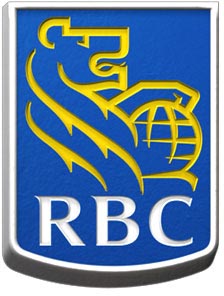 THUNDER BAY – BUSINESS – Investing in education is critical to fostering strong and healthy Aboriginal communities. However, while successful education completion is on the rise among Aboriginal peoples, a gap still remains compared with the rest of Canada. According to Statistics Canada’s 2011 National Household Survey, 22.81 per cent of Aboriginal peoples aged 25 to 64 reported high school as their highest level of education (up from 21 per cent in 2006) and almost one-half (48.4 per cent) completed post-secondary qualification, up from 44 per cent in the 2006 Census. These results compare with 89 per cent of Canada’s non-Aboriginal population holding at least a high school diploma, and 64 per cent attaining post-secondary qualification.
THUNDER BAY – BUSINESS – Investing in education is critical to fostering strong and healthy Aboriginal communities. However, while successful education completion is on the rise among Aboriginal peoples, a gap still remains compared with the rest of Canada. According to Statistics Canada’s 2011 National Household Survey, 22.81 per cent of Aboriginal peoples aged 25 to 64 reported high school as their highest level of education (up from 21 per cent in 2006) and almost one-half (48.4 per cent) completed post-secondary qualification, up from 44 per cent in the 2006 Census. These results compare with 89 per cent of Canada’s non-Aboriginal population holding at least a high school diploma, and 64 per cent attaining post-secondary qualification.
To help grow Aboriginal peoples’ educational and workforce participation, and ultimately strengthen Canada’s competitiveness and economic prosperity, this gap must close faster. That is why supporting innovative programs which help students achieve their goals remains a priority for RBC, and why this focus is highlighted in A Chosen Journey: RBC Aboriginal Partnership Report released today.
In 2014, the RBC After School Grants Project’s investment in a new after-school program at Eleanor W. Graham Middle School in New Brunswick yielded strong impact based results supporting student learning. When asked why students enjoyed attending school, 85 percent of students identified the RBC After School Grants Project as the reason for increased attendance and higher levels of engagement. With the right resources and knowledge, overcoming educational barriers and challenges is not only possible, but can be repeated successfully from coast to coast to coast.
“I have seen firsthand the difference education can make,” says Chinyere Eni, national director, Aboriginal Markets, RBC. “Through grants and donations towards after-school programs, extracurricular activities and financial literacy awareness programs, RBC has been able to promote and support youth education in Indigenous communities across Canada. These are the stepping stones that support the proactive engagement of Indigenous youth in not only education but also in community.”
RBC believes education is a cornerstone to helping shape the future for today’s Aboriginal youth. This year’s Partnership Report celebrates the relationships and Aboriginal youth educational programs that RBC has developed in collaboration with First Nations, Métis and Inuit communities and peoples across the country.
Chippewas of Kettle & Stony Point First Nation, situated on the shores of Lake Huron, Ontario, is just one example of a community focused on supporting financial literacy. The First Nations Financial Management Board recognized the need to create opportunities for band members through greater financial literacy. As such, the Chippewas reached out to Phil Fontaine, Special Advisor to RBC, for assistance. Fontaine spearheaded RBC’s proposal for an innovative, integrated approach to banking with a strong emphasis on increasing financial literacy in the community. Through targeted outreach and an integrated approach to learning, our relationship with the community has facilitated a rise in financial literacy.
“Having known Chief Tom Bressette for many years, I can attest to his unwavering commitment to his First Nation and the empowerment of his people,” Fontaine said. “In addition to implementing a strong financial management regime for his government, his vision and initiative to increase the financial literacy of his citizens is another tangible demonstration of his leadership. The Chippewas of Kettle and Stony Point First Nation and RBC have forged a respectful and reciprocal relationship that will enable them to learn from each other as they move into a positive economic future for the First Nation.”
Other highlights from the A Chosen Journey: RBC Aboriginal Partnership Report include:
- Elsipogtog First Nation’s peoples at Eleanor W. Graham Middle School in New Brunswick created an innovative After School Program to increase student engagement. The program provides students with interactive and educational activities ranging from snow showing and wood carving, to programs such as music, sports, and science which mirror student interests. Prior to the creation of the After School Program, First Nations student engagement in school activities included fewer than 15 per cent of the First Nation school population. Now, 90 per cent of First Nation students participate in one or more of the after school sport, cultural, music or training activities, and has been maintained for the past five years.
- Oskayak High School located in downtown Saskatoon, benefitted from the Aboriginal Youth Entrepreneurship Program (AYEP), offered by the Martin Aboriginal Education Initiative (MAEI), a charitable organization with a guiding vision to empower Aboriginal students with the knowledge and confidence they need to complete secondary school and go on to post-secondary studies. The elective course offered through the program is supported through the multi-year partnership with RBC and has helped inspire positive change for within participant schools, students and educators alike. Over the past three years, 57 students have participated in the Entrepreneurship courses.
The 2014 RBC Aboriginal Partnership Report is available online at www.rbcroyalbank.com/commercial/aboriginal.

